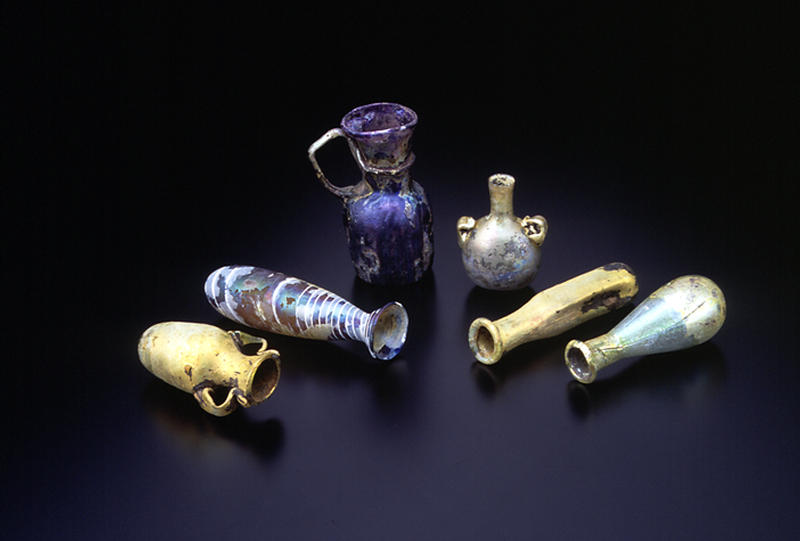Bottles
- Eastern Mediterranean or Italy
- 132-136. 1st - 3rd century, 137. 5th - 6th century
- Glass
Catalogue Entry
This small bottle was free-blown from greenish translucent glass and its mouth then bent inward. The beautiful translucent form is lovely. This work, and those like cat. No. 133, are called Ungentarium from their shape, and were often formed from blown glass during the Roman period for general use in great numbers as containers for daily-use cosmetic materials.
Catalogue Entry
This small bottle was free-blown from brown semi-translucent glass. Three white lines have been wrapped around the bottle from base to neck and fused to the bottle. This was a cosmetics bottle.
Catalogue Entry
This bottle was free-blown from yellowish translucent glass and then the sides of the bottle were pressed into a square bottle shape. The mouth is bent inward, and the surface is covered overall with a yellow-colored iridescence.
Catalogue Entry
This bottle was free-blown from yellowish translucent glass and then handles were applied. The mouth was cut off horizontally and the base is hollowed to make the bottle free-standing. This was probably a cosmetics bottle.
Catalogue Entry
Free-blown from yellowish translucent glass, this small bottle has two attached handles. The mouth is bent at the middle and is decorated with a fine glass wire wrapped around the mouth five times. This was probably a cosmetics bottle.
Catalogue Entry
This small bottle was blown from pale blue translucent glass in a mold with vertical lines, and the handle was then attached. The color of the glass appears at first glance to be a beautiful purple color, but there is pale blue glass beneath the purple layer attached to a section of the inner surface. This purple iridescence which looks like the work has been color-dyed is rare. The handle is made of greenish translucent glass and is connected to the cords decorating the neck. The base is hollowed and has a pontil mark. This probably was used as a cosmetics bottle.

